
Avery Fischer-Udagawa
[M]any a Japanophile points to Japanese literature in English translation as the key that opened a door to a new world. Literary translations, and translators, remain central to the spread of Japanese culture and thought — especially in the West, where Japan is seldom covered in the mass media.
But who is currently undertaking the work of translation? We rarely know. Publishers understandably give top billing to original authors. The identities, if not the names, of the translators are often left to our imagination.
Surprisingly, more than a half-century after the post-war boom in Japanese-English literary translation, there is still no such thing as a “typical” translator. The practice of translating literature from Japanese remains the province not of an established profession with fixed rules of entry, but of individuals with varying backgrounds — stories hidden behind brief notes on book jackets.
Recognizing that dissimilar backgrounds lead to distinctive approaches to texts — a fact ever more apparent to readers, now that some major Japanese works are available in at least three English versions, each with its own kind of fidelity to the original — KJ sought out the stories of several active translators. We asked what brought them to Japanese-English literary translation, and where they see the practice going from here.
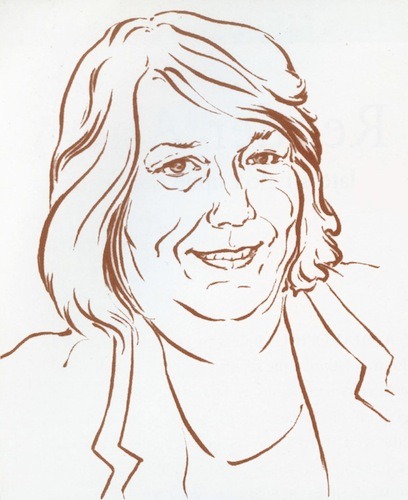
Wordsmith: Juliet Winters Carpenter
When she was a college student engrossed in The Iliad, Juliet Winters Carpenter recalls being told by a teacher that reading in translation is like holding hands with one’s beloved, while wearing gloves.
It’s magical, said her teacher, but “you sure wish you didn’t have the gloves.”
Although Carpenter agrees, she has devoted much of her professional career to making available in English more than 40 Japanese titles, including works of nonfiction and modern literature in nearly every genre. Her corpus includes translations of novels by Abe Kobo, Enchi Fumiko, and Shiba Ryotaro, as well as Tawara Machi’s landmark tanka collection Salad Anniversary. She frequently translates the works of winners of the Nakahara Chuya prize for modern poetry, and Spring 2004 will see the release of three of her renderings of children’s books, by Shimamoto Kazunori, Kawamata Tadashi, and Shimabuku Michihiro, respectively. Carpenter is currently at work on projects to do with “foods” and the meaning of life (Takamori Kentetsu’s bestseller Naze Ikiru), and she says she also has murder mysteries to work on. She points out that she has not translated much drama — but, oh yes, her students in the English Department at Doshisha Women’s College of Liberal Arts subtitle films for in-house use. Their most recent exercise was A Raisin in the Sun.
A professor who has taught English, translation, and Japanese literature and culture to students in Kyoto for more than 20 years, Carpenter is in an enviable position from which to practice literary translation. She seems to practice it like a craftsman enamored with a tool, or an artist in love with a medium, eager to apply it to a range of projects. “Ever since high school I’ve wanted to be a translator,” she says.
Carpenter first encountered Japanese at age 11, when in 1960 she took a trip overseas with her father. The initial incomprehensibility of Japanese captured her imagination. “I thought, ‘How can (people speaking Japanese) possibly understand each other?’” Carpenter says. Certain phrases such as konban wa “just stayed in my mind.” She was also struck to hear that while Japanese in Tokyo said arigato gozaimasu, residents of Osaka said ooki ni.
Carpenter’s fascination with Japanese, combined with a certain “desire to be different” — her family has ties to Hudson Taylor, the first Protestant missionary to go to China — led her to take summer courses in Japanese and write a term paper on Mishima Yukio during her teenage years. While working on the paper, she “realized how hard translation would be, and that the person translating something is a really important person,” Carpenter says. “I aspired to it then.” She went on to do undergraduate and graduate work in Japanese literature at the University of Michigan, which was then home to her “hero,” translator Edward Seidensticker.
Michigan connections led to Carpenter’s big break: a request from Knopf to translate a chapter of Abe’s Secret Rendezvous on speculation. Carpenter was chosen to do the whole book, then asked to do others.
However, she says her real training as a translator began when she worked on the editorial staff of the magazine The Wheel Extended (then published by Toyota) for two years between college and graduate school. It was an environment in which “you had to get an A on everything,” Carpenter recalls. “It taught me certain things that I never would have learned otherwise.” She still remembers her editor taking her to task for translating the phrase ii camera literally, as “good camera.” Does “good” mean “high-speed”? Does “good” mean “precision”? The answer was research, which Carpenter still finds essential.
“When you translate, it can’t just be you and the text and your dictionary,” she says. “When you’re doing a book on pottery, you have to surround yourself with pottery books.” At the same time, “You have to read widely in English also . . . to know what good contemporary English sounds like.” Over a cup of hot tea in an office lined with books, Carpenter points out some of her current reading material: Yann Martel’s Life of Pi and Garrison Keillor’s anthology Good Poems, among others. After the interview she e-mails a column her brother wrote about the Chicago Cubs.
Carpenter also comments that translating a wide range of Japanese texts — as opposed to specializing, as is common in her field — has benefited her work. “A paper I once translated on color categories in Japan versus the West has proven useful in a whole range of projects, for example.
“In fiction, you have to be prepared for anything — there are different levels of speech, different kinds of characters . . . extended references to tea ceremony or shamanism or what have you,” Carpenter says. “And the challenge of translating poetry, learning to be both concise and evocative, to experiment with the resources of one’s language, carries over into almost everything.”
When asked to describe an ideal translator, Carpenter answers in part, “a person who is alert to how language works.” She seems to meet this description exactly.
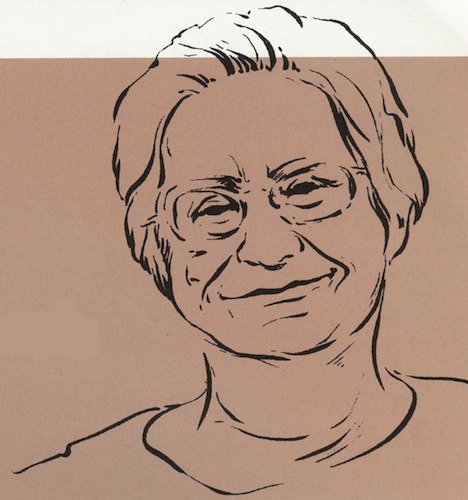
Literary detective: Janine Beichman
As a light rain falls outside her home in Ibaraki Prefecture, Janine Beichman produces an essay she published recently in the Japanese poetry journal Gendaishi Techo. The first paragraph gives time-tested metaphors for translation: the Italian traduttore traditore (“translators are traitors”), the Japanese yakusha wa yakusha (“translators are actors”). The essay goes on to discuss translating poetry by Ooka Makoto, but in addition to displaying Beichman’s skills as literary scholar and critic, it also demonstrates her own literary flair: She creates a new metaphor for translation: bearing a load across a border.
“When the text is particularly difficult and just cannot be put into English, the translator becomes an exhausted beast of burden, bearing smuggled goods secretly over a mountain pass in the night,” she suggests. On the other hand, “when the text is easy, the translator is a ferryman crossing a gentle stream.”
Literary scholarship, combined with translation, is a path Beichman has followed since her college years. As an undergraduate at New York University, she wrote a senior thesis on Chaucer and planned to do graduate work on Anglo-Saxon literature. However, a dare from a friend and an anthology by Donald Keene convinced her to change course: “With the insouciance of youth, I said goodbye to Anglo-Saxon and went to graduate school in Japanese.” Like Carpenter, Beichman came to live in Japan permanently after a period of graduate study in the U.S. — in her case, after earning a Ph.D. at Columbia University.
When she entered Columbia on a National Defense Foreign Language Fellowship in 1963, Beichman knew no Japanese but relied on her background in English literature. After a period of language-learning, she engaged in intensive practice of translation, producing English versions of a major Noh play and Masaoka Shiki’s diary A Drop of Ink. Translation ushered Beichman into close acquaintance with Japanese literature, which she has now taught to Japanese students for over 15 years as a professor at Daito Bunka University (she also lectures in comparative literature at Tsukuba University).
Beichman has continued to translate a range of works, including Setouchi Harumi’s collection of stories The End of Summer, as well as modern poetry by Ooka. For ten years, she also regularly translated selections from Ooka’s Asahi Shimbun column Oriori no Uta, which featured poetry from a range of periods plus “tightly compressed critical essays.” Beichman’s translations of the column ran as “A Poet’s Notebook” in the Asahi Evening News, and some were collected for publication in two books. The experience of translating Oriori no Uta proved an invaluable study for Beichman, who remembers with nostalgia years of discussing the column with Ooka via fax: “He’s translated a lot himself and knows English very well . . . (he knows) what works as poetry. I really learned a lot.”
Currently Beichman is translating modern poems by Ishigaki Rin, and she regularly judges translations of essays and short stories for a prominent new translation contest: The Shizuoka International Translation Competition (www1.sphere.ne.jp/shizuoka/translate/index-e.html).
Ultimately, however, Beichman seems to see herself working in service of literary scholarship, to which she recently made an acclaimed contribution with a study of tanka poet Yosano Akiko. (The study also contains new translations of more than 100 tanka from the classic Tangled Hair.) “I am now working on the second volume of my literary biography of Akiko,” Beichman says. “This will, I hope, establish her as a figure of importance in world literature.”
Beichman seems to have conducted her research on Akiko, and her translations of the Tangled Hair tanka, by performing literary detective work. She collected copies of Meiji-period literary journals from libraries in Japan and the U.S. so that “I was able to read all the poems by Akiko and her friends in their original context.” In this manner, Beichman traced how a courtship through poetry unfolded between Akiko and the poet Yosano Tekkan. She also examined tanka as presented not only in print, but also on stone monuments, fans, and other artifacts. In this way, she arrived at her approach of varying the lineation and orientation of phrases in translations of tanka poems, rather than always putting them in five lines flush left.
Beichman is careful to note that mentorship, in addition to her research, contributes significantly to her translation. Over the years she has consulted closely not only with Ooka and Donald Keene — who was her dissertation adviser — but also with her husband, who is Japanese, and their two bilingual daughters. She notes that, finally, there are many ways to approach translation, and probably no one way to train as the ideal translator.
“I could say (one needs) a deep knowledge of the original text and a perfect knowledge of English, but that’s like saying that translation is possible. We all know it isn’t.” There will always be some smuggling involved.
Ultimately, what one must ask of a translator, Beichman says, is that she “tangle with the text on as deep a level as possible,” and there are “many, many valid ways to relate yourself to that literature.
“Any connection that is living is okay,” she says, “but you have to be loyal in an intimate, physical sense to the text.”
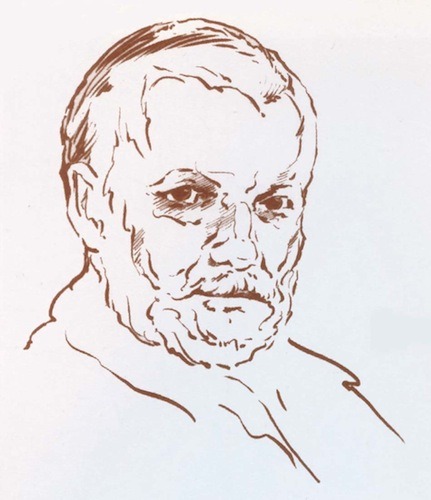
Poet-activist: Sam Hamill
Perhaps no one can claim a more intimate connection to literary texts than translators who also write poetry or fiction in their native language.
And possibly no poet-translator can boast a more physical connection to Japanese source texts than Sam Hamill, who cites not only tutoring and input from the academic community, but also military service and study in Okinawa, 40 years of Zen meditation, and a journey along Basho’s route through northern Japan as key preparation for translations of poems from Basho, Issa, Akiko, and the Manyoshu, among others.
Altogether Hamill has produced more than 30 books, including his own poetry, collections of essays, and translations from classical Chinese, ancient Greek, Latin, and Estonian, as well as Japanese. He is a founding editor of Copper Canyon Press. He has also become known for his activism — most recently, for his leadership of Poets Against the War (www.poetsagainstthewar.org).
Every part of Hamill’s background feeds both his poetry and his translation, he says, and the two endeavors cross-fertilize one another.
“I’ve included translations from Ryokan, Saigyo, and Ikkyu in volumes of my own poetry,” he writes in an e-mail from Port Townsend, Washington, where he lives in a small, hand-built house. “My last two books have many poems written in Japanese syllabic measure, either from haiku or from waka.
“Moreover, the sensibility is the big important thing. Japanese Zen has been at the center of my writing and translating life, along with the Chinese masters, since I was an adolescent. I was an ‘engaged Buddhist’ before there was such a term. In the tradition of Gary Snyder and other American Zen poets.”
In a recent interview for The Progressive, Hamill said that his great fascination with translation is that it “obliterates the self” — requires him to “impersonate” another poet, to “get as deeply into the poem as possible” in order to recreate it in English.
The debate over to what extent translators can do this has become intense in recent decades with the development of translation theory. Is it translators’ duty to translate text literally, or to render instead experiences behind texts? Should translators focus on creating literature in readable English — or stretch the boundaries of English in order to give a better sense of the original? In a colloquium at the International House of Japan in Spring 1998 (transcribed and edited in the volume Words, Ideas, and Ambiguities: Four Perspectives on Translating from the Japanese, Imprint Publications, 2000), scholar-translator John Nathan suggested that translators need to be much more “open to the incursion or the invasion of freshness into the language.” In a roundtable discussion that Donald Richie described as “utterly unbuttoned,” Nathan also challenged three high-profile colleagues, saying, “If we open to the middle of the books we’ve all done, most critical readers would have difficulty finding the distinctive tone which exists in the original.” His remarks seem to have been seconded by others at the forum, both panelists and participants, who suggested that Japanese literature in translation has been “deodorized” — made “beautiful and pretty and sensitive” rather than “ugly,” “provocative,” or “brutal,” in order to meet the expectations of readers.
At the same time, the gulf between Japanese and English is sometimes so wide that the translator must make adaptations for the target audience. At the International House forum, and in a September 2003 speech to the Tokyo Society of Writers, Editors, and Translators, Edward Seidensticker used translations of Shakespeare into Japanese to illustrate this point. Take Hamlet: “Good night, sweet prince: / And flights of angels sing thee to thy rest” requires only fourteen syllables in English, but a basic translation of the first line alone (“Oyasuminasai, Hamuretto-sama”) requires twelve syllables. To give the entire line, a popular Japanese translation takes thirty-nine syllables. In such situations, it may be impossible to replicate the distinctive tone — in this case, the elegant simplicity — of the original. What can one do? “You make a stab,” Seidensticker said. And readability cannot be entirely sacrificed.
The multitude of choices faced by translators has, in recent years, led to multiple, widely varying translations of some texts — including some that Sam Hamill has attempted. So, what are readers to do when choosing among, say, several translations of poets such as Basho?
Hamill e-mails (with a chuckle, one imagines): “Am I supposed to confess that I think my Basho is the best? Okay. I do. But I recommend the reader try comparative reading. Read them all. Especially when dealing with translation, which always presents variable options to the translator.”
To The Progressive, he suggested readers have much to gain by doing so: “The oldest cliché in the world is about ‘what’s lost in translation,’” but you don’t very often read much intelligent about what’s gained by translation, and the answer is everything. Our language is a compendium of translation.”
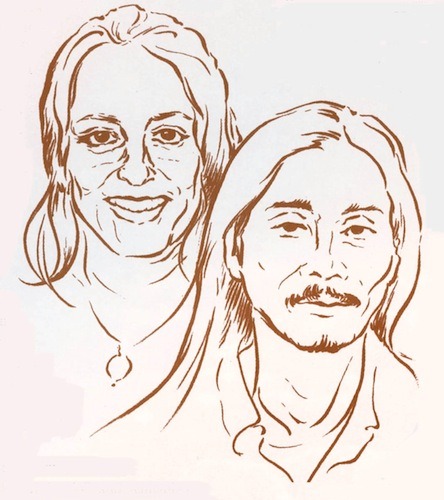
Collaborative pair: Leza Lowitz and Oketani Shogo
Another approach frequently employed in Japanese-English literary translation is collaboration between a native English speaker and a native speaker of Japanese, who between them combine aspects of the wordsmith, the scholar and the poet. Nearly all of the translators interviewed for this article have tried collaboration at some point. Oketani, the son of the literary critic Oketani Hideaki, grew up “surrounded by books” and remembers hearing names such as Tolstoy and Dostoevsky by age five. He learned to read English and French while studying philosophy at Keio University. He is also a published poet. When Lowitz met him at a jazz club in Yokohama about ten years ago, she recalls, “he had only left Japan once but was very open-minded,” due to extensive reading. Even now, Lowitz declares him the “scholarly” one of the pair. Lowitz’ background was largely in writing in English — she studied English literature as an undergraduate at UC Berkeley and earned an M.A. in creative writing from a prestigious program at San Francisco State in the 1980s. She has also published three collections of poetry and a short-story collection. While her focus has been creative writing, Lowitz also encountered Japanese poetry at key points in her education — including a screenwriting course at New York University, where excerpts from Kenneth Rexroth’s 100 Poems from the Japanese were used as the basis for a discussion of cinematic perspectives. Lowitz also read haiku with Robert Hass in an undergraduate writing workshop at UC Berkeley. Finally, during her Master’s course, she completed an intensive minor in modern Japanese fiction and first studied the Japanese language. She went on to collaborate with Aoyama Miyuki to translate a landmark two-volume anthology of poetry by contemporary Japanese women in the early 1990s; she has also advised English-Japanese literary translators, including Murakami Haruki, on their translations of American poetry and fiction into Japanese.
Together, Oketani and Lowitz recently translated the major poems of Japanese modernist poet Ayukawa Nobuo — a figure Oketani compares in significance to Allen Ginsberg — for a book that in 2003 won the prestigious Japan-U.S. Friendship Commission Award for the Translation of Japanese Literature from the Donald Keene Center, Columbia University. The project took them eight years.
Lowitz and Oketani follow an approach in which Oketani first produces a literal translation, then “goes away” while Lowitz reworks the English. After this, the two come together for “deep revision” — a process in which they discuss the nuance of every word that Lowitz may have changed, and every word Oketani wants to change. They then edit each sentence of the poem “again, and again.” Lowitz often has Oketani read the poems aloud in Japanese, so that she can try to replicate their sound in English
Like Hamill, the two place their approach firmly on the side of reading and then, in a sense, enacting in English the poem as lived by the poet — as opposed to translating in a “slavishly literal” way. Oketani has likened the process to mining, to “trying to arrive at the core of the lode that was finally struck (by the poet) by relying on each hole bored by the poet’s pen and paper.” Lowitz has called it “midwifing the underpoem.”
Over a lunch of miso soup, lotus root, and sauteed shiitake mushrooms prepared by Oketani, the couple mentions several times the difficulty of this task. Ayukawa’s poetics, heavily influenced by 20th-century Western thought, and developed from a position of marginalization from Japanese society, were nevertheless embedded in the language of post-war Japan. “We had to take a lot of creative risks,” says Lowitz.
But she notes that, in combination with Oketani’s skilled reading — vital in understanding poetry that often quotes, or even misquotes — “my relative weakness with Japanese in a way helped me. It enabled me to be more free.
“Very few people are going to read the translation next to the Japanese. You have to be willing to take chances with it,” Lowitz says. The couple’s ultimate test is, “Is it a good poem in English?”
Translation’s future: Others weigh in
At a far remove from Tokyo, two other winners of the coveted Columbia award — Maggie Childs for a collection of late medieval tales, and Elaine Gerbert for the book Love of Mountains, containing two novels by eccentric 20th-century writer Uno Koji — teach Japan studies courses at the University of Kansas, Lawrence. On a hot, late-summer afternoon, Gerbert remarks that literature in quality translation, material that has a “unity of mood” that “pulls one into another world,” is absolutely indispensable in their work.
“Most students don’t have reading proficiency in Japanese,” she notes, but literature grants students access to another sensibility, in a way that even films cannot. “Literature alone gives you the inner voice.”
Gerbert, who was mentored by noted postwar translator Edwin McClellan, could likely go on about the characteristics of quality translation, as well as the process required to handle literature depicting a world distinct from one’s own. Gerbert is, after all, an American educator who somehow managed to handle Uno’s strange narrators — one of whom, for example, hocks his kimonos but visits them at a pawn shop obsessively, and addresses the reader in very twisted prose.
Gerbert’s practicality, in contrast, is illustrated by how she turns the conversation. On a question about choosing translations for classes, she bypasses the issue of quality and goes straight to economics.
The choice of translations, she says, is often based on availability and price. And finding the ideal selection of works in affordable paperback is difficult, because “the industry hasn’t created a taste for works in translation. It’s hard even to introduce works by Nobel Prize winners.”
Gerbert’s comments serve as a stark reminder that the barrier preventing quality translations of Japanese texts from reaching English-language readers — or from even being translated at all — involves far more than each translator’s approach. Economic and professional forces have far more sway.
A recent article by Gerbert, “Images of Japan in the Digital Age” (East Asia, Spring-Summer 2001) along with an earlier but frequently cited article by Edward Fowler, “Rendering words, Traversing Cultures: On the Art and Politics of Translating Modern Japanese Fiction” (Journal of Japanese Studies 18:1, 1992) both present in disturbing detail how forces affecting both publishing and academia have made production of quality translations increasingly unprofitable — both financially and professionally — for translators. In sum: even as market forces, particularly in America, have made it increasingly risky for major publishing houses to take on literary translations, the emphasis in universities’ Japanese literature departments has shifted from translation to literary criticism — making it hard for translators in academic posts to receive professional recognition and support for their work.
“There’s an overall problem” in universities, agrees Beichman. Starting around the 1970s, as the level of Japan scholars’ language proficiency increased, and as English and Romance language departments applied pressure to analyze texts using literary theory, suddenly “it wasn’t enough just to translate. We had to have a ‘more sophisticated’ approach to texts. . . . (translation) became a kind of add-on in books about Japanese literature.”
Fowler’s article also notes that publishers’ failure to market translations could be contributing to the lack of demand for them. This has added to translators’ predicament.
Gerbert is careful to note that on the publishing front, certain foundations and agencies are taking up some slack. For example, Japan’s Agency for Cultural Affairs has launched the Japanese Literature Publishing Project (JLPP) to “promote the translation of outstanding Japanese literary works into other languages and their publication overseas” (list of titles available at www.jlpp.jp).
Gerbert also mentions that at least one publishing house in New York, Vertical (www.vertical-inc.com), is actively working to increase demand for Japanese fiction, by releasing popular works in attractive packaging.
“We try to put out books that we think Americans (and other Westerners) would want to read,” says Vertical’s director Micah Burch, “rather than books Japanese people may want them to read.” Burch explains that while many on Vertical’s staff came to their work through love for classics, they now believe that their focus on “literary entertainment” is “a more accessible way to introduce fiction in translation.”
Beichman says she has recently found reasons to be cautiously optimistic about developments in academia, as well. First, tThe Shizuoka International Translation Competition, boasting such distinguished judges as Ooka and Keene, has recently awarded some of its prizes to graduate students — a step that may gradually enhance the prestige of translation in the academy, and help offset the recent emphasis on theory and commentary. “That means the standards will go up,” Beichman suggests, “for being correct, for doing justice to the original work.”
She adds that there could also be changes in the publishing industry, stemming from the recent success of Royall Tyler’s translation of The Tale of Genji — which in hardcover alone has sold more than 17,000 copies, a very high number for a translated literary work, according to Tyler.
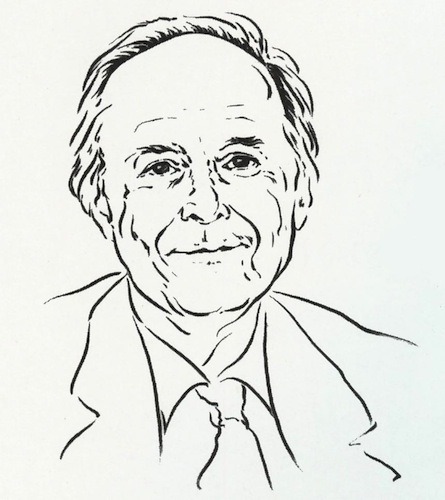
“Labor of love”
In a telephone interview from the vicinity of Canberra, Royall Tyler reflects that one of the main reasons he actually did the Genji translation was so that he himself could read and understand the difficult text in the original. “When I first started translating,” he recalls, “I found that I had not understood it. And I thought, if I commit myself to translating it, I will actually get to read the whole thing.” Tyler got to know Genji’s cast of characters intimately by creating different voices for them. He says he went over their lines in his head “a bit the way an actor does. . . . Scenes would arrange themselves in my mind as though I were playing the part.” “Translating The Tale of Genji has certainly changed my life,” says Tyler. Now retired from Australian National University, Tyler grew up in Europe and the U.S., studied with Keene at Columbia, and has also taught in the U.S., Canada and Norway. Since the success of his Genji translation, he has received numerous additional opportunities to travel and teach. He enjoys recounting how a Genji-related teaching stint at Harvard enabled him and his wife to buy a van to transport the alpacas they raise.
He doubts, however, that the success of his Genji translation will have a ripple effect on other translations from the Japanese, particularly those of little-known works. “Genji is outside the normal parameters . . . it’s (already) so famous,” Tyler explains, noting that earlier translations by Arthur Waley and Seidensticker, in addition to the novel’s numerous connections to pop culture, helped create an unusually hot market for his version. “Genji doesn’t have to make its own way . . . I hope it does help other translators, but I can’t imagine why it would.”
Other translators also point out that translation is, above all, a wonderful way of reading, of developing a close acquaintance with a text that one loves. More than a task accomplished for academic promotion or financial gain, it is, they say, a “labor of love,” an activity that produces a high they couldn’t give up if they tried. Malinda Markham, an award-winning new poet now in Tokyo translating contemporary Japanese poetry, notes that when she translates, “I have the same feeling as when I’m creating a poem of my own. I’m physically in a different world.”
But for translators’ labors to continue reaching an audience, an audience must first be waiting. The fate of Japanese-English literary translation ultimately lies in the hands of readers, who choose whether or not to slip their hand into the fabled glove — to be dazzled by the array of renderings which translators of Japanese literature continue to create.

Illustrations by Beverly Effinger